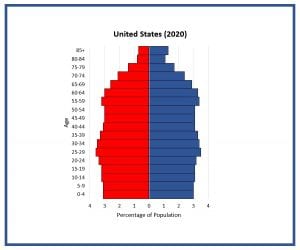The U.S. population has changed dramatically over the past 200 years. Not only has our total population drastically grown (from 4 million in 1790 when the first census was taken, to 318 million in 2014), but our population center has gradually shifted to the south and west.
To reveal this westward population shift, one needs only to examine the changes in the mean center of population over time. Mean center of population is defined by the U.S. Census Bureau as, “the point at which an imaginary, flat, weightless, and rigid map of the United States would balance if weights of identical value were placed on it so that each weight represented the location of one person.”
In this animated map just released by the Census Bureau, the shift in population is clear. In 1790, the population center was in Kent County, MD. By 1820, the center had shifted to Hardy County, WV, and by 1880, the center was located in Boone County, KY. Letting the simulation play until 2010, we see that the population center has moved all the way to Texas County, MO. A number of historical factors have played into this shift over the years including the expansion and development of western railroads, increased mining and ranching in the west, and in more recent years, migration to the nation’s sunbelt (the south and western states). This trend is expected to continue in the coming decades.
The Pop Ed activity, Connecting the Dots, offers a hands-on approach for investigating our nation’s gradual population shift. In the lesson, students create a population density map by looking at data from the year’s 1800-2050, and adding dots to each state for every 1 million people. A series of discussion questions helps students interpret the data and draw conclusions.



